A very nifty trick I discovered while working on making KanjiBox accessible to blind users.
I previously mused that an iPhone/iPod made a much better and more cost-efficient language-studying tool than any dedicated electronic gizmo out there. This is now a thousand times truer…
One of the coolest features brought by version 4 of iOS (the software that runs on all iPhone/iPad/iPod Touch) is also one of the least known and used: VoiceOver is a built-in screen-reader geared at making Apple devices accessible to blind and visually impaired users. If you are such a user, you know about it already and will learn nothing here. For everyone else, this feature still has much to offer!
VoiceOver supports a dizzying collection of languages: from English to Japanese, Mandarin and Cantonese, most European languages, hell, even regional accents (English comes in US-, Brit- and Aussie-accented variants… Canadian-French as well). While the quality for English is about what you would expect from late-90s speech synthesis, the quality of some other languages is vastly superior. This is particularly true of the Japanese and French voices. To my very limited ear, Mandarin and Mexican-Spannish also sound quite close to human quality (Spain-Spanish, on the other hand, is pretty robotic).
As it turns out, your iPhone (/iPad/iPod Touch) comes with a native pronunciation teacher, out of the box. For hard-to-read languages like Japanese or Chinese, it can be a life-saver: helping you decipher SMS, emails or web pages, instead of relying on clunky, time-consuming, copy-pasting to a dictionary app.
Below are detailed instructions on how to enable VoiceOver and use it to read any text in any language on your iPhone (setup should be near-identical for iPads and iPod Touchs):
Setting-Up VoiceOver
Setup is a little more complicated than it should be, but takes no more than 2 minutes and only needs to be done once!
1. Open the 'Settings' application.
2. Choose 'Accessibility' from the Settings menu.
3. Go to the 'Triple-click Home' section at the bottom
4. Select 'Toggle VoiceOver' and go back to the previous screen.
5. Select the 'VoiceOver' section at the top”
6. Go to 'Language Rotor' at the bottom.
7. Select the foreign language(s) you want to use VoiceOver with: e.g “Japanese”. Unless you also want to use your iPhone to read in your native language, you don’t need to select anything else.
Using VoiceOver anywhere in your iPhone
8. Go to a screen that contains text in a language you want to read (e.g. SMS, email or virtually any iOS application that contains text).
9. “Triple-click” on the Home button (round button with a square on the front of your iPhone): you will hear a notice that VoiceOver has been activated.
10. If you click on an item at this point, VoiceOver will probably try to read it in your main language (or not at all, if your language is English and you are trying to read Japanese text).
11. To switch to the correct language: make a two-finger "rotation" motion on the screen until the dial is selecting 'Language'.
12. Then, swipe your finger vertically (top-to-bottom or bottom-to-top) on the screen, until you hear the language you want (for instance: “nihongo”).
13. Tap an item and marvel as your iPhone reads it to you in a very convincing early 2010s imitation of a human voice!
14. You can disable VoiceOver by triple-clicking the Home button again.
Note: While Voice-Over is activated, controls work in a slightly different way: double-taps replace single-taps (single-taps will read the item instead of activating it), scrolling is done with three fingers instead of one (one-finger swipe will switch languages)… Check VoiceOver docs for more details.
Note 2: VoiceOver is not installed by default on older iPhone/iPods: I believe only 3GS and up (and equivalent iPods/iPads) with iOS 4 and up, are supported.
Ever since I discovered this trick, I use it all the time to help with SMS when I am unsure about the reading (and/or meaning) of a kanji compound or need to sift quickly through a large web page all in Japanese. But this can also be used to great advantage if you are a language beginner and want to get audio feedback in an application like Kotoba or KanjiBox (for the latter: the upcoming version features advanced support for VoiceOver which removes the need to manually select your language: text will automatically be read in the appropriate language).
Have I just blown your mind or what?
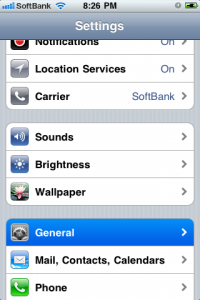
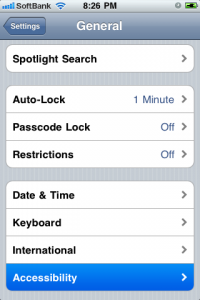
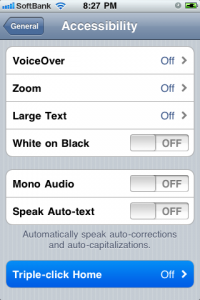
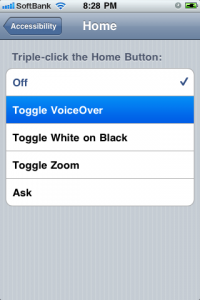
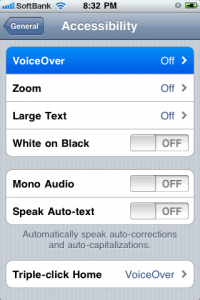
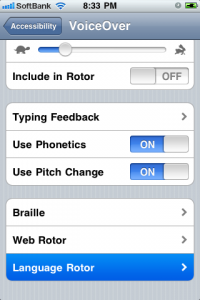
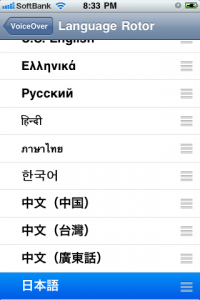
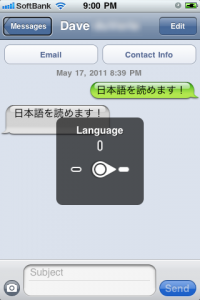
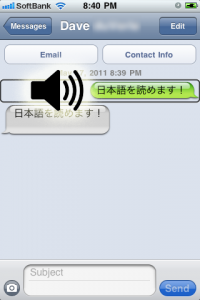
Mine, kinda … wife’s … rather not … she was just ‘yeah cool, but it reads the kanjis wrong’ …
@Peter: well, parsing Japanese and picking the right reading is far from a trivial problem (since obviously even native humans get it wrong sometimes). In order to get 100% accurate reading choices, you’d need to more or less “understand” the text, which even advanced translation programs are still far from doing…
But on an entirely unscientific sample of simple messages and casual webpages, it got 100% right, as far as I could tell. I was even surprised at some of the colloquial turn of kanji it got right…
Point taken, though: one definitely shouldn’t rely on this tool as the ultimate authority on reading Japanese, more like a backup to help you read…